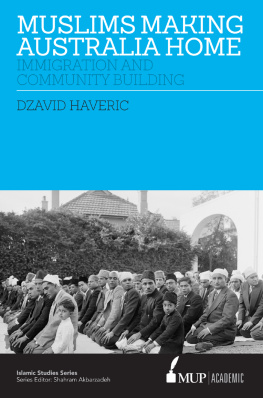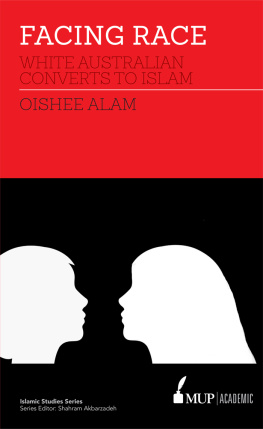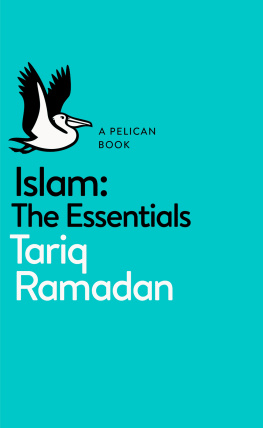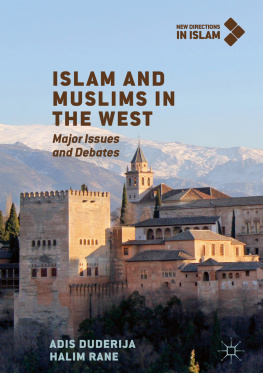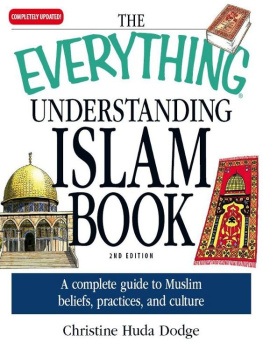Islam and the Australian News Media
MUP ISLAMIC STUDIES SERIES
The Islamic Studies Series (ISS) is aimed at producing internationally competitive research manuscripts. This series will showcase the breadth of scholarship on Islam and Muslim affairs, making it available to a wide readership. Books in the ISS are based on original research and represent a number of disciplines including anthropology, cultural studies, sociology and political science. Books in the ISS are refereed publications that are committed to research excellence. Submissions on contemporary issues are strongly encouraged. Proposals should be sent to the ISS Editor.
Associate Professor Shahram Akbarzadeh
ISS Editor ()
Board of Advisors
Associate Professor Syed Farid Alatas
Department of Sociology, National University of Singapore
Professor Howard V. Brasted
School of Humanities, University of New England
Professor Robert E. Elson
School of History, Philosophy, Religion and Classics, University of Queensland
Professor John Esposito
Director, Prince Alwaleed bin Talal Center for Muslim-Christian Understanding, University Professor of Religion and International Affairs, Georgetown University
Emeritus Professor Riaz Hassan AM, FASSA
ARC Australian Professorial Fellow, Department of Sociology, Flinders University
Professor Robert Hefner
Institute on Culture, Religion and World Affairs, Boston University
Professor Michael Humphrey
Chair, Department of Sociology and Social Policy, School of Philosophical and Historical Inquiry, University of Sydney
Professor William Maley AM
Director, Asia-Pacific College of Diplomacy, Australian National University
Professor James Piscatori
Centre for Arab and Islamic Studies (The Middle East and Central Asia), Australian National University
Professor Abdullah Saeed
Sultan of Oman Professor of Arab and Islamic Studies, Director, National Centre of Excellence for Islamic Studies, University of Melbourne
Professor Amin Saikal AM
Director, Centre for Arab and Islamic Studies (The Middle East and Central Asia), Australian National University
Professor Samina Yasmeen
Director, Centre for Muslim States and Societies, School of Social and Cultural Studies, University of Western Australia
Islam and the Australian News Media
Edited by Halim Rane, Jacqui Ewart and Mohamad Abdalla

Foreword
The social role and responsibilities of the media towards social harmony is a hotly debated topic. Is the media an agent of public education and social cohesion, or is it simply a business venture aimed at maximising profit? What is the relationship between media and freedom of expression? These and other related questions regarding control and ownership of the media have become even more pertinent following September 11 and subsequent terrorist attacks in Madrid, London and Bali. These tragic events have given rise to concerns about the dangers that may lurk in our own backyard. Suggestions that Australian Muslims may be a fifth column for Osama bin Laden have done serious damage to community relations. The insistence of the previous Australian government on distinct values that demarcate us from the rest implied an inherent incompatibility between Australian and Islamic values. The deliberate portrayal of Afghan and Iraqi asylum seekers as queue-jumpers, people who deliberately break the law to gain entry into Australia, put even more strain on the reputation of the Muslim population. Many Muslims in Australia began to believe they were being accused of all sorts of mischief and anti-social behaviour. The pressure to recant for these assumed sins was compounded by the medias unbalanced coverage of Islam and Muslims.
The media are of course not a monolithic whole. The press, radio and TV each have their own constraints and modus operandi. In the case of the press alone, the oldest form of mass media, tabloid and broadsheet papers compete for a share of the readership. The governing principle is commercial, hence the problem with social responsibility. The tendency to sensationalise is the inevitable consequence of the need to attract attention, and sell. The broadsheet papers have tried to balance out the need for melodramatic stories with more thoughtful investigations, allowing for the wide diversity of Islam and Muslim experiences to gleam through. The overall picture that emerges, however, is less encouraging. One of the greatest disservices done by the various forms of the media is to ignore the diversity of Islam, focusing instead on a small minority of Muslims who break the law. This biased and simplistic approach to Islam carries major repercussions, given that the majority of Australians rely on the media to learn about Islam.
Finding a balance between social responsibility and maximising profits is certainly a difficult task, but it is imperative that we explore various options and alternatives, learn from our mistakes and improve on past practices. This collection offers a valuable critique of the media and its social impact.
Associate Professor Shahram Akbarzadeh
Islamic Studies Series Editor
Contents
Part VRoles and responsibilities
Preface
Since the turn of the twenty-first century, no minority religious community has captured media headlines as Muslims have in the West. Across Europe, in the US and in Australia, issues and events involving Islam and Muslims have been at the top of the news agenda for the past decade and are likely to continue to attract significant media attention in the foreseeable future. For most Westerners, the mass media are the primary source of information about this faith and its adherents. Western media have come to be seen as a central determinant of not only what is known about Islam, but also the primary influence on public perceptions of Muslims. The media are viewed as being instrumental in shaping attitudes towards Muslims and influencing inter-community relations between them and the wider society.
A number of books and articles, generally in the European and American contexts, have explored the relationship between Islam and the media. Research in the Australian context is relatively limited. With the exception of a few studies that have examined the representation of Muslims in the Australian media, important questions about the Australian medias reporting on Islam and Muslims and its impact on inter-community relations and the Muslim response remain unanswered. This book is the response of its contributors and editors to the lack of information about what has become a critical issue for not only the field of media studies, but also social relations. It provides valuable insights into the operational realities of reporting on Islam and Muslims, the representation of Muslims, the medias role in shaping relations between Australian Muslims and the broader community, and how Muslims are dealing with the media and their public image.
Islam and the Australian News Media brings together the insights, knowledge and experience of a range of contributors: academics of various disciplines, media researchers and journalists from across the socio-political spectrum. Blaming the media for what they perceive as a misunderstanding of Islam and public negativity towards Muslims has become a common catchcry among some sections of the community. More broadly, the credibility of certain media entities has been questioned by members of the general public, scholars, and even journalists in the context of some media reporting of issues and events involving Muslim people. We are confident this book will be a welcome addition to the bookshelves of social and media researchers, students of journalism and media studies, journalists and other media personnel, and all those interested in media and social relations.



